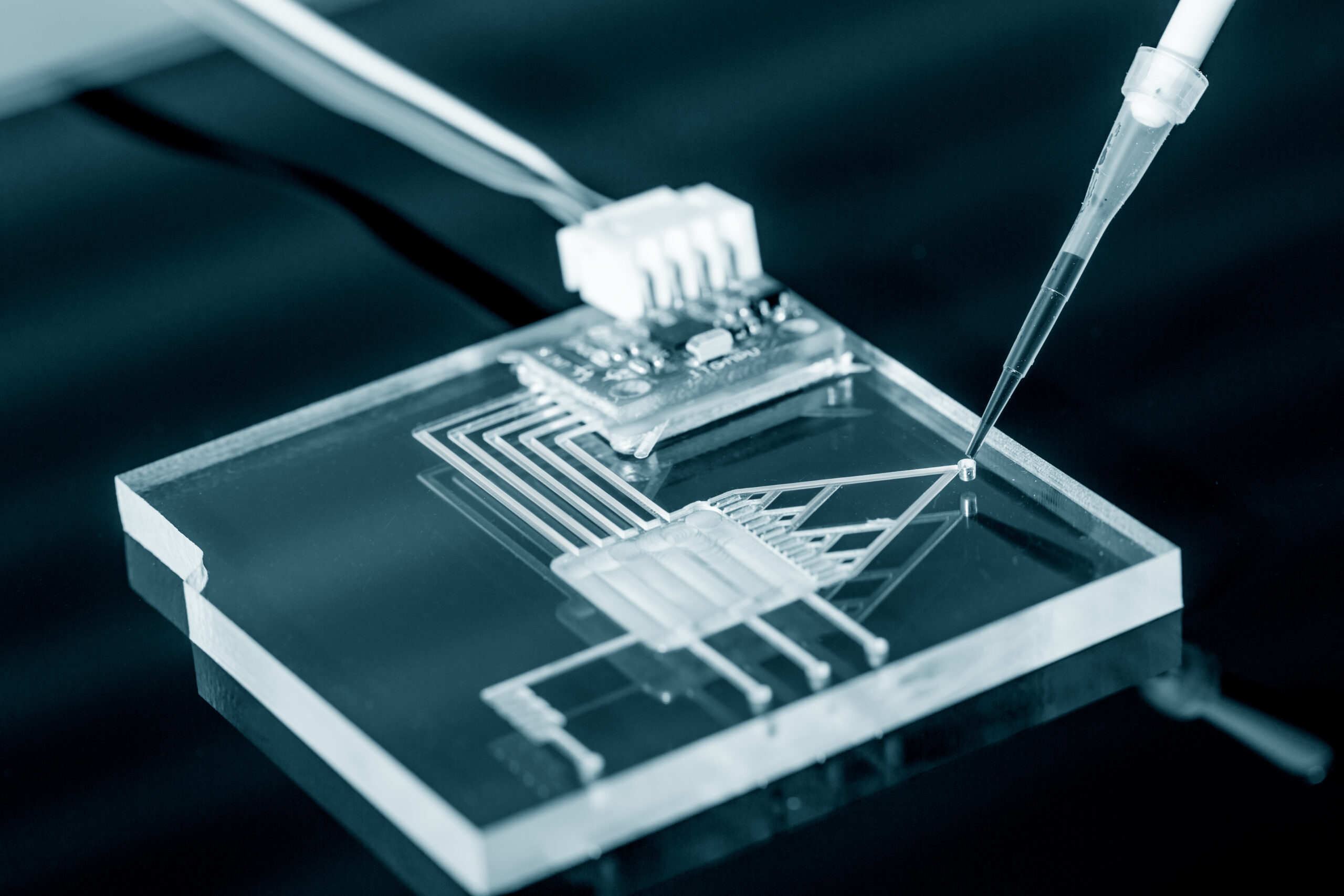
Microfluidic Device Manufacturing
Additive manufacturing has emerged as a powerful platform to fabricate 3D functional microfluidic systems from a variety of polymeric materials. Microfluidics enables investigators to build microstructures with complex shapes and geometries in a short time. 3D Printing is shaping the future of the microfluids industry like hardly any other process. 3D printing can be used to effectively reduce the time between design and practical experimentation, from weeks to hours, which greatly accelerates the research and development process for microfluidic applications and devices. Commonly available 3D printers are not suitable for creating fluidically-sealed devices, you need an precise and accurate printer like the Asiga MAX X27.
Devices Printed on Asiga Max X 27 UV




















Why choose an Asiga Printer for Microfluidics?
Precise
In microfluidics manufacturing, extreme accuracy and precision is required. The Asiga MAX X has a pixel resolution of 27µm, 35µm, or 43µm. Parts with capillary tubes, nano-pumps, or channels for micro wiring are being printing on Asiga MAX Xs every day.
Easy to Use
Asiga’s additive manufacturing systems are designed as plug and play right out of the box. Composer software imports STL or SLC files that are a common export file from most CAD programs on the market. It’s just that easy.
Accurate
Asiga's unique SPS™ process guarantees every layer is formed accurately. Accurate layer formation is the key to achieving consistently accurate results in any application especially microfluidics.
Open
All Asiga systems are open material systems, allowing build materials from most manufacturers designed for DLP systems to be used. Biocompatible and engineering resins from a range of manufacturers are currently being used with the Asiga Systems.
Affordable
Amazingly low prices for leading edge, well-engineered, 3D additive manufacturing systems.
Frequently Asked Questions
With Formlabs, the resin cannot be stored long-term in the resin tank. Is this also true for this printer?
Uncured resin can remain intact in the tray of your 3D printer for many weeks if you keep it away from UV light exposure. The ideal condition for storing uncured resin is a cool, dark place. You can use the Asiga MAX Tray storage cases to keep the tray in an ideal storage environment. If the environment is not ideal, the UV resin may last for as short as a few hours or 1-2 days. In the end, the lifespan of your 3D resin depends on the conditions of the environment.
What are Asiga 3D Printers being used for in the medical field?
Creation of microfluidic devices.
Prototyping and Testing in Medical Device Development.
3D printing to help fight Cardiovascular disease
Inside the Innovation Centre at the Victor Chang Cardiac Research Institute. Asiga 3D printers being used to help grow tiny human hearts. The Victor Chang Cardiac Research Institute 3D print micro-scaffolds on the Asiga MAX X to provide a structure when melding human heart cells. This structure helps the human heart cells gain proper maturity to form organoids (tiny hearts) which are then used to research the genetic changes that cause Cardiovascular disease.



